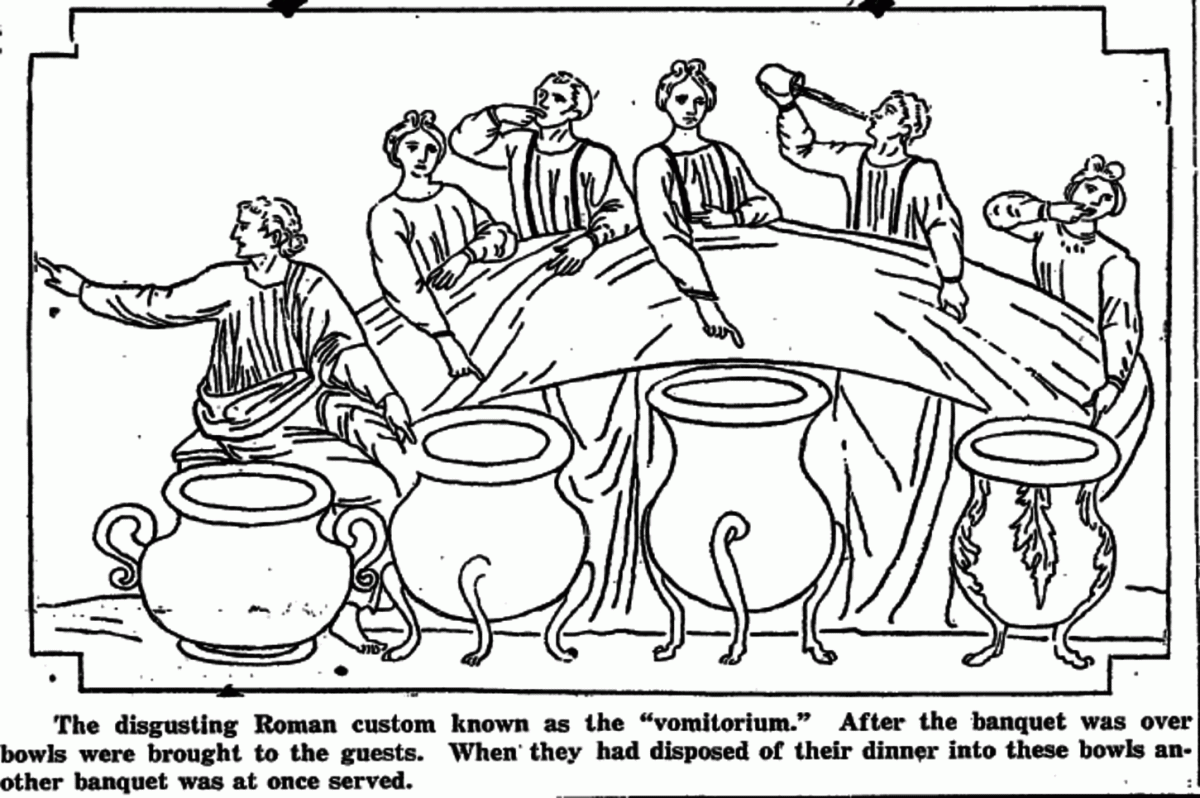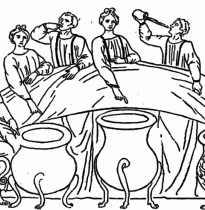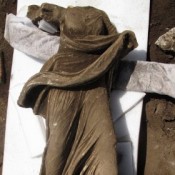The word vomitorium has been often used to describe a room, adjacent to the dining room where a Roman dinner would take place, where participants would relieve themselves from a full stomach and carry on with the feast. However, no ancient source actually uses the word for this purpose.
The word, part of the Latin word group referring to vomiting, fist appeared in the 5th century AD in the Saturnalia of Macrobius, who used the plural to refer to passages that caused spectators to “spew forth” into their seats at public entertainment events. Archaeologists today use the words vomitorium/vomitoria as architectural terms, to describe the passageway or corridor of an amphitheatre connecting the bank seats with an outside space.
So, how did the word come to be associated with a room used for vomiting during a Roman orgy? A misuse of the word appears in 1929, in Aldous Huxley’s novel Antic Hay, although earlier relevant references have been made in newspaper and journals, not being clear, however, as to whether the vomitorium was a passageway or a room. In 1871, two references are made to the vomitorium as a room adjacent to the dining room, one by French journalist and politican Felix Pyat, describing a holiday meal and comparing it to a Roman orgy, and one by English writer Augustus Hare, in his publication Walks in Rome. Two articles in the Los Angeles Times, in 1927 and 1928, refer to the vomitorium once more with the same meaning. So, by the time Huxley’s novel was published, the vomitorium had already been inscribed in popular imagination as a room used for vomiting during a Roman dinner party so that the participants would be able to carry on eating.
But where were all those references inspired from? Stories of Roman orgies with the participants throwing up during the meal are described in Roman courtier Petronius’ Satyricon, from the 1st century AD, but no specific room is designated for the act. Cassius Dio in his Roman History and Suetonius, secretary of correspondence to the emperor Hadrian, in his On the Lives of the Caesars also provide plenty of stories of imperial excess and vomiting while dining.
The excesses of emperors in relation to food and wine are described in detail, from Hadrian to Claudius to Vitellius, in the above works, but the main aim of the descriptions is to highlight how unsuitable these individuals were as emperors, and the extent of their moral laxity and decadence. The message was quite clear to Romans, who knew that a proper Roman would be devoted to the gods, his family, and to the state, rather than to alimentary pleasures.
Seneca the Younger was particularly fierce in his criticism for those who spent their fortunes on exotic dishes.
However, vomiting was rather widespread among Romans, but as a medical treatment. If it became a daily habit, it would be a sign of luxury. Also, until the Victorian period, the adjective vomitorius, -a, -um was used to describe emetics.
Therefore, from an amphitheatre spewing out people as Macrobius used the term an architectural association of the verb led to the misinterpretation of vomitorium in the 19th century imagination as a room for vomiting.









